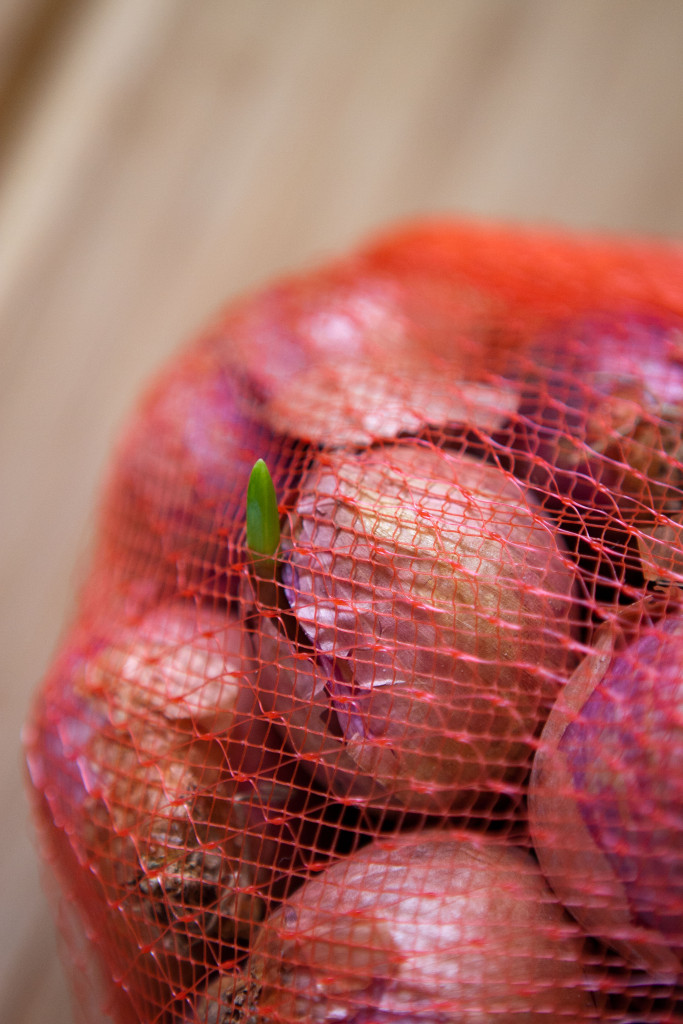How shallot start my garden?

With shallots of course! Shallots (allium cepa var. aggregatum) are in the allium family along with onions, leeks, garlic, chives, garlic chives, and ornamental allium. Allium are characterized by a bulb, green leaf stocks, and a flowering floret. (Garlic chives are the exception. They have a rhizome instead of a bulb.) Shallots reproduce in one of two ways: from seed and from producing new bulbs. The general rule about bulbs is that larger bulbs produce many smaller bulbs while small bulbs produce fewer but larger bulbs.
For the beginner gardener, shallots are great plants to start with. They can be planted just about anywhere here in Zone 10. Full sun or partial shade, clay or soil. They find a way to thrive. Often times, you do not have to go out of your way to get started. They’ll invite themselves in. My shallot crop was started from shallots that I had in the kitchen. More often than not a bag of shallots from the market will begin to sprout before you can use them all. When they start to sprout you can either rush to get them in a dish or you can find it some dirt.
In the dirt, (which I plant about a quarter-inch under the soil), the shallot will continue to grow long green leaves. When the leaves are at least six inches in length, they can be harvested as scallions. This makes shallots and onions great plants to have in the garden. Whenever scallions are called for, it’s a short trip from the kitchen to harvest some. As long as the bulb is in the ground, a new set of leaves will grow back ready for harvest.
When the leaves are left on the bulb it will eventually send out a scape. The scape is a firmer stem that shoots from the middle. It is like a firework. The scape will slowly ascend as it matures. When it reaches its full height, it opens and forms a floret. The floret is like a firework suspended in time. After some time, the tiny flowers that make up the floret turn into seed. From there, even more shallots can be grown. Growing shallots from seeds is fairly easy. It is also surprising how quickly they mature from seedlings.
